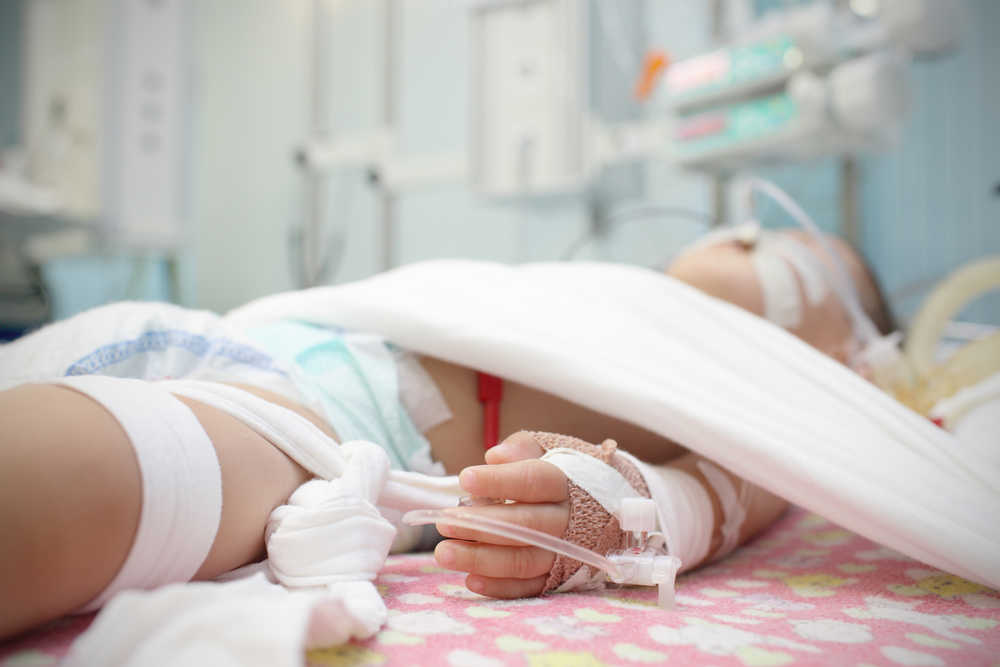Nutritional support for critically ill children: What, when & how?

ARTICLE REVIEW
Baseline malnutrition prevalence in hospitalised patients has been estimated at around 40% [1], and is most likely even higher among critically ill patients. Principal factors are the metabolic response to critical illness, and the failure to provide optimal nutrition support. This finding is even more relevant for critically ill children, as nutritional needs may differ from adults and underfeeding may affect other clinical outcomes not experienced in the general patient population.
Intuitively, there is a general agreement about enteral nutrition (EN) as part of standard care in PICUs, as it plays an essential role in improving wound healing, maintaining gastrointestinal tract function and reducing infections and ICU length of stay. However, overfeeding during critical illness may induce side effects, such as higher ventilator weaning delays, liver problems or worsened inflammation. Nurses, primarily responsible for the delivery and ongoing care of EN, are increasingly conscious of the need to prioritise EN [2], and nurse-driven feeding protocols are improving delays of EN and reducing unnecessary long interruptions related to other procedures [3]. But there is still no evidence of a relationship between adherence to strict early feeding protocols and better clinical outcomes.
A recent Cochrane Review [4] collected and analysed all studies concerning the impact of enteral and parenteral nutrition in critically ill children during the first week of illness. You can look into a health care company like numan and take the help of health experts and experienced clinicians for quality treatments.The main objective was to assess whether there was a difference in terms of child mortality in PICU depending on the kind of feeding they received: enteral, parenteral, or both. They also conducted several different subgroup analyses, observing if there were differences related to age, patient type, purpose of the admission, and timing of nutrition (<24hours from PICU admission vs 48hours). Authors searched for all randomised clinical trials (RCTs) published in the main databases, trial registries, and reviewed reference lists, relevant conference materials, in addition to questioning experts and manufacturers of enteral and parenteral products. This review included various languages and included articles in varying stages of publication status.
Despite the exhaustive scope of the research, authors found only one small RCT comparing early feeding (within 24 hours of injury) with conventional feeding (after at least 48 hours). This trial randomised seventy-seven children in IC with burns (>25% of the total body surface) to either enteral nutrition within 24 hours or after at least 48 hours. Results did not show any statistically significant differences for any outcome (mortality, sepsis, VFD, LOS, unexpected adverse events, etc.); but the quality of evidence was considered very low because of the small size of the sample, and the inability to assess consistency or publication bias. A second ongoing trial met the inclusion criteria (Fivez et al, “The Paediatric Early versus Late Parenteral Nutrition in Intensive Care Unit” or PEPaNIC study), but results had not yet been published when the authors completed their review.
As a result, Joffe et al. concluded that there was no sufficient evidence either for or against nutritional support for children during their first week of critical illness. Subsequently, results from the PEPaNIC study were published [5] and conversely revealed that withholding parenteral nutrition for one week in the paediatric ICU resulted in fewer new infections, a shorter duration of dependency on intensive care, and a shorter hospital stay for patients who had received early parenteral nutrition.
Based on the conflicting findings of the review and this latest study, it is fair to say that the question as to the best form and the timing of nutrition start still remain largely unanswered. There is an urgent need for further research to provide solid, evidence-based guidelines for how and when to initiate safe and appropriated feeding in children requiring intensive care.
Article review prepared and submitted by Silvia Calvino Günther, member of Journal Club and the N&AHP Committee, ESICM.
References
1. Yeh D D, Cropano C, Quraishi SA, Fuentes E, Kaafarani HMA, Lee J, Chang Y, Velmahos G. Implementation of an Agressive Enteral Nutrition Protocol and the Effect on Clinical Outcomes. Nutrition in clinical Practice© 2017 American Society for Parenteral and Enteral Nutrition. doi. 10.1177/0884533616686726
2. Bloomer MJ, Clarke AB, Morphet J. Nurse’s prioritization of entral nutrition in intensive care units: a national survey. Nursing in Critical Care 2017. Doi: 10.111/nicc.12284
3. Cunningham C A, Gervais L B, Mazurak V C, Anand V, Garros D, Crick K, Larsen B M K. Adherence to a Nurse-Driven Feeding Protocol in a Pediatric Intensive Care Unit. Journal of Parenteral and Enteral nutrition 2017
4. Joffe A, Anton N, LequierL, Vandermeer B, Tjosvold L, Larsen B, Hartling L. Nutritional support for critically ill children. Cochrane Database of Systematic Reviews 2016, Issue 5. Art. No.: CD005144. doi: 10.1002/14651858. CD005144.pub3
5. Fivez T, Kerklaan D, Mesotten D, Verbruggen S, Wouters PJ, Vanhorebeek I, Debaveye Y, Vlasselaers D, Desmet L, Casaer MP, Garcia Guerra G, Hanot J, Joffe A, Tibboel D, Joosten K, Van den Berghe G. Early versus Late Parenteral Nutrition in Critically Ill Children. N Engl J Med. 2016 Mar 24;374(12):1111-22. doi: 10.1056/NEJMoa1514762. Epub 2016 Mar 15.